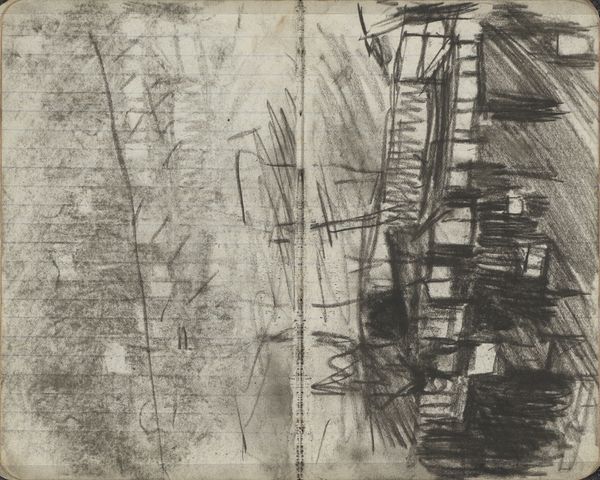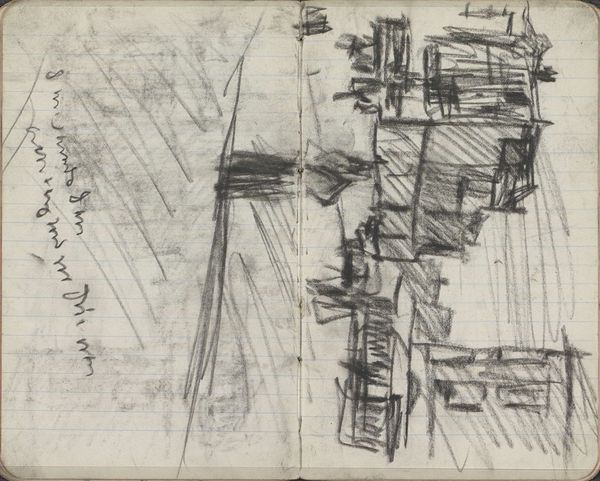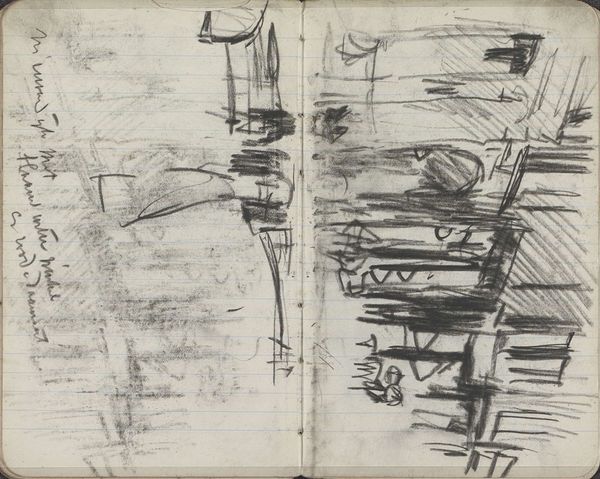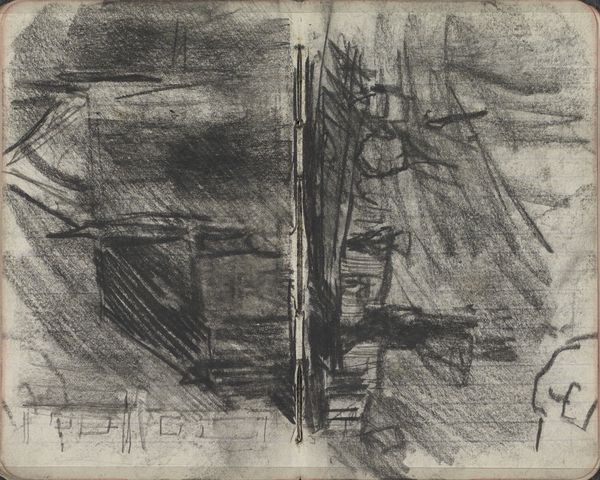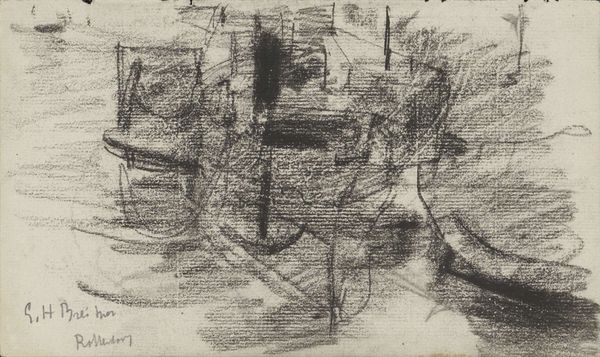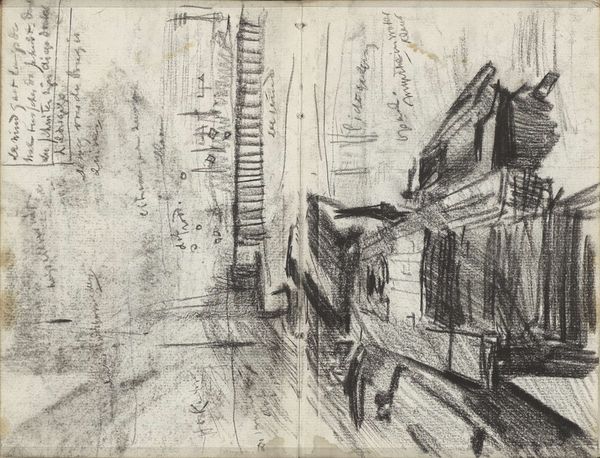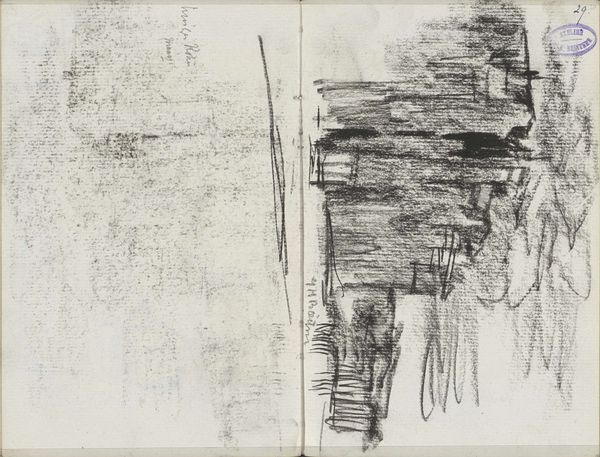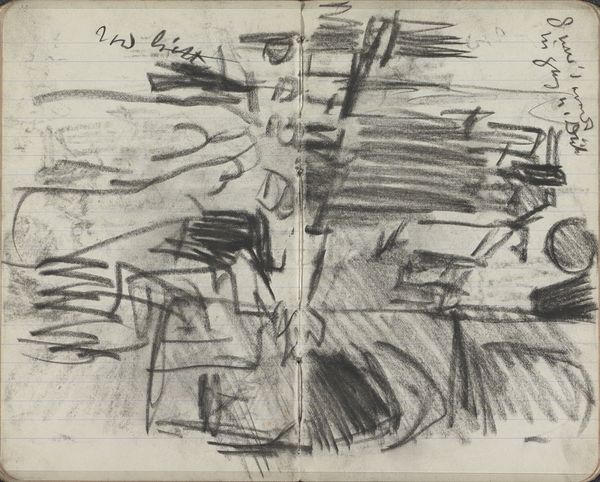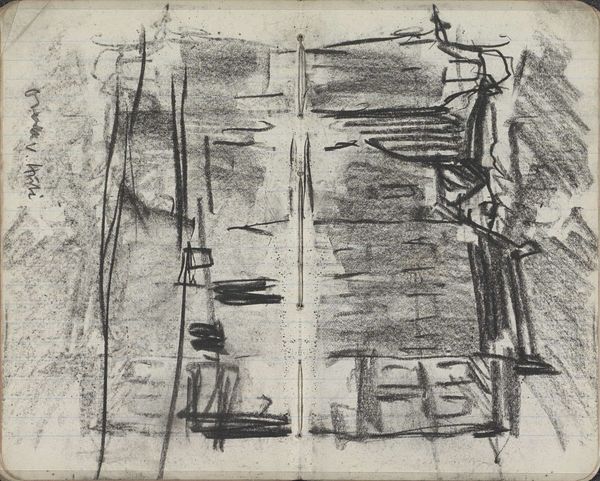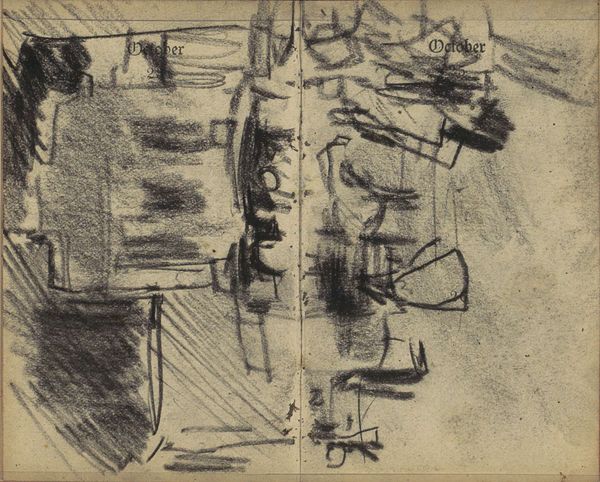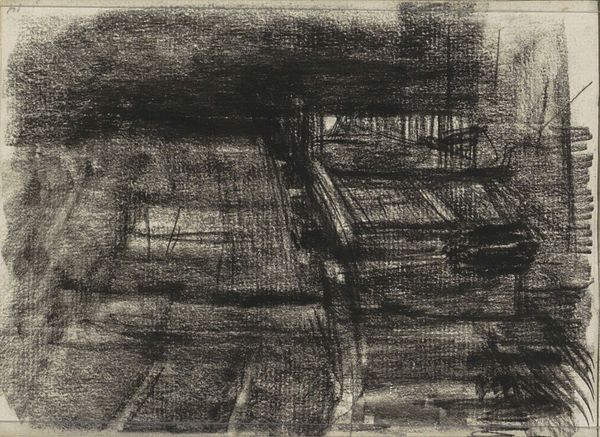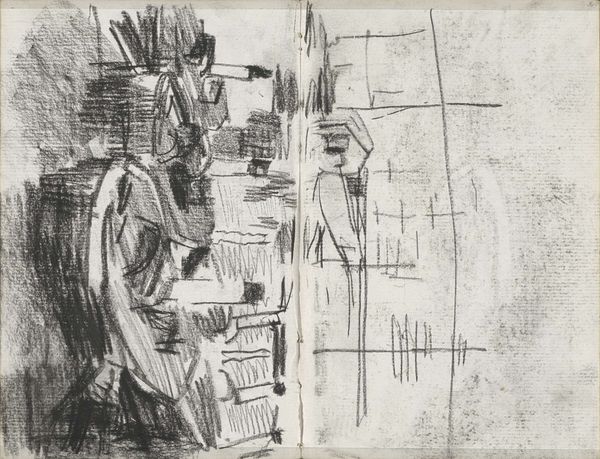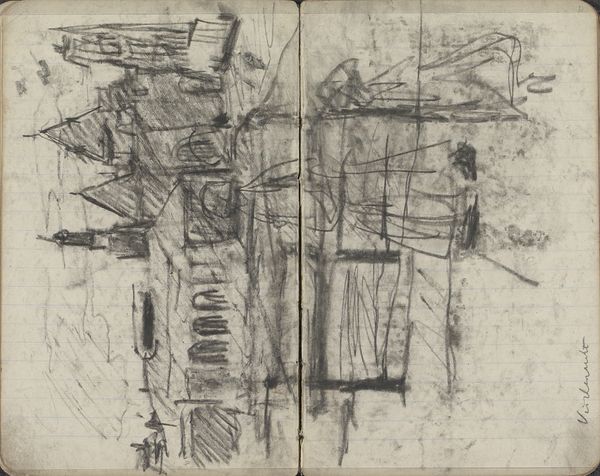
Copyright: Rijks Museum: Open Domain
Curator: This sketch captures the Rokin in Amsterdam as seen through the eyes of George Hendrik Breitner between 1893 and 1898. We're looking at a pencil and graphite drawing currently held at the Rijksmuseum. Editor: Immediately, I'm struck by the dense, almost claustrophobic feeling. The heavy use of graphite creates such a murky, urban atmosphere; I find it hard to breathe just looking at the marks on the page. Curator: That dense feeling really mirrors Breitner's project of representing the gritty reality of Amsterdam. The late 19th century was a time of immense social change, with the rapid growth of cities. Artists like Breitner played a pivotal role in how urban experience was represented, and the sketch's intensity reflects a modern social tension. Editor: True, the layering of dark tones and rapid lines communicates anxiety or maybe excitement over the urban flux. What do you make of the open composition? It bleeds across the sketchbook's spine to imply an extension. The choice emphasizes the continuousness of the urban surrounding, yet does so by halting visual information in the physical boundaries of this sketchbook. Curator: Yes, I find it really interesting. Breitner positions the city within reach of everyone because of the sketchbook's small format, which emphasizes accessibility through his visible process, suggesting art is a tool for social navigation available to more than a wealthy class of patron. Editor: I notice a stark division in visual information. In the background, the shapes flatten in value and fade into scribbled shading; in the foreground, some building is outlined or suggested but without shading that grounds it. This emphasizes pictorial depth with a push-pull in planar arrangement. What about that sketch in the bottom-right corner? Do you read that mark as separate from the spatial composition as a whole? Curator: That's an intriguing aspect, and it might show us Breitner experimenting with representing different dimensions of urban life—the planned structure of the cityscape butting up against the more fragmented reality of experiencing the street. It's less about idealizing the urban and more about acknowledging its multifaceted realities. Editor: Looking at how quickly it was sketched, perhaps during his engagement with Amsterdam’s environment, helps clarify how to examine the planar divisions as experiments on how to convey spatial information in compressed form. In its totality, I find this sketch a document with clear, powerful, artistic intents. Curator: Exactly. It serves as a testament to Breitner's engagement with his time, an immediate snapshot in his socio-historic exploration.
Comments
No comments
Be the first to comment and join the conversation on the ultimate creative platform.
